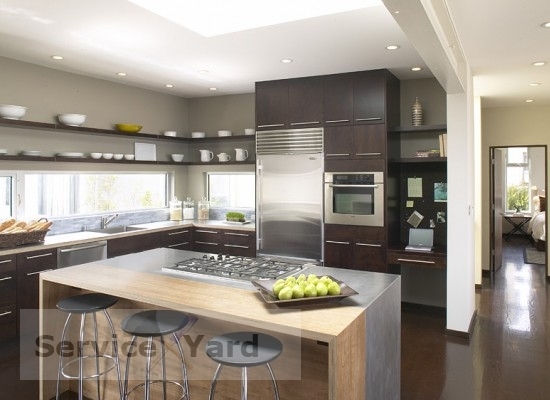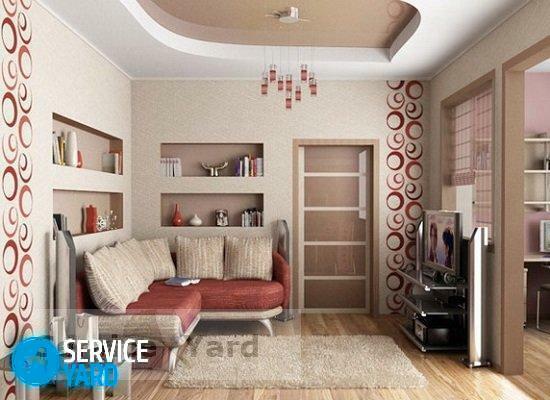For decades, made of polymeric materials manufactured assortment of different diameters. They are used in power and plumbing as substitutes obsolete, heavy and are difficult to assembly of cast iron and steel products. Produced using new technologies metallopolimernye pipe gained popularity due to lightness, strength, workability of installation.
What are polymeric tubes
Polymers began to be used on an industrial scale in the late 80-ies of the last century. They successfully replaced the cast iron mounting of different water-based systems. From metal products are distinguished by a number of very important parameters:
- strength.
- ease.
- elasticity.
- durability.

Applications in industry and construction of plastic pipes of different diameter justified their very high resistance to the adverse influence of oxygen. Due to the low thermal conductivity coefficient material significantly increases the heat efficiency through the radiators. To reduce the impact of shortcomings (high flammability, exposure to ultraviolet rays, large thermal expansion) of the polymers are administered various materials, metal inclusion.

Polymer pipes are used for arranging cold and hot water, sewage, waste water, as well as chemically liquids. Where heat exposure is not critical (maximum rate - 10 aboutC) suitable cheap products without "cross-linked" polyethylene. At temperatures above 70 aboutSince the polymer systems and drainage pipes assembled from the reinforced multilayer finished articles made of heat resistant plastic with the inclusion of aluminum.
As classified
Modern technologies allow to produce several kinds of plastic products - pipes connecting various other elements. They differ in the chemical composition of plastic materials, the presence of metallic inclusions:
- Polyvinyl chloride (PVC) - material that polymers from other varieties distinguished toughness and ring stiffness. Successfully applied for the installation of non-pressure sewage. Rugged material SN16 - the basis for the construction of underground utilities. High resistance to the pressure loads allows the use of polymeric pipes of large diameter to a depth of 12 m Basic physical characteristics.:
- limiting pressure - 16 bar.
- the maximum temperature of the medium - up to 45 aboutFROM.
Available in the form of non-plasticized.
- Polyethylene (PE) - is used for laying underground communications pipe. Maximum penetration - up to 16 m high elasticity polyethylene can be used for the manufacture of inserts of different types.. In addition, it is excellent for airless dust-proof shell. Material consisting of a "crosslinked" molecules (labeled with PE-X), copes with the influence of the temperature to 60 aboutFROM.

- Polypropylene (PP) - used in standard mains or pipelines with a corrosive medium (hot water). Similarly propylene PVC has a high circumferential stiffness. The main advantage of this material - resistance to high temperatures. Therefore, polypropylene is actively used for water pipes.
- Metal-plastic (PEX-AL-PE) - the most popular of all the material, which are used in the manufacture of materials for water supply. Through a combination of the polyethylene liner, reinforced aluminum gasket and basic shell product obtained is extremely strong, with light. The ideal option for decorating your home or water heating system.
- Polybutene (PB) - included in the group of polyolefin plastics. Bol has high plasticity index than the polypropylene. It is much more resistant to UV rays. thermal conductivity index closely approximate to that which is characterized by "cross-linked" polyethylene. Products from PB - perfect material for the device warm floor systems. At a pressure of 0.3 MPa and a temperature of up to 70 aboutWith the material lifetime - 50 years.
| Indicator | Characteristics of the material | |||||||
| HDPE (PVP) |
HDPE (CAP) |
JHA (PFP) |
PVC | PP | PB | PVDF | PA (plastified). | |
| Density, g / cm3 | 0,94-0,96 | 0,93-0,94 | 0,91-0,93 | 1,4 | 0,91 | 0,92 | 1,78 | 1,1 |
| Tensile strength, MPa | 20-30 | 15-18 | 10-12 | 50-56 | 25-28 | 17-19 | 57-60 | 35 |
| Elongation at break,% | 800 | 800 | 600 | 50 | 350 | 300 | 20 | 100 |
| Modulus, MPa | 900 | 600 | 200 | 3000 | 1200 | 500 | 2000 | 800 |
| The coefficient of linear expansion | 2 | 2 | 2 | 0,7 | 1,5 | 1,2 | 1,2 | 0,9 |
| Allowable stress, MPa | 50-63 | 50 | 25-32 | 100-125 | 50-63 | 80 | 160 | 100 |
As manufactured
The basic technology of manufacturing plastic pipes - extrusion. The method is implemented on modern complex integrated machines - injection molding machines. The required number of special plastic spherical polystyrene, is loaded into an extruder and provided in a liquid state by means of heating. After that there is squeezing the resulting mass in the working area of the metal base - the mold. The process of maintaining the desired temperature and cooling time in the mold of polystyrene is controlled by electronic sensors.
In the production of pipes with metalloarmirovannoy basis using special molds, allowing to make coiling stretching polymer fibers using a special metal core. Cooling of the binder is carried out using the method of forced polymerization. Continuous winding is convenient because it can help to infinitely vary the length of the finished pipe.
Marking of plastic pipes
Products made of polymer materials are described in the international standards ISO 4437 and ISO 4427 standards. Manufacturers also use and regional specifications. In order to properly select the desired application for the type of plastic pipe, you must first become familiar with their marking. It is divided into two types:
- Basic.
Such labeling must comply with established international standards and contain the maximum amount of information about the material and the specifics of its application. Specifying materials produced using Latin letters:
- B - blokspolimer.
- H - homopolymer.
- R - randompolimer.
The numbers are indicated:
- outside diameter.
- The minimum thickness of the tube wall.
- operating pressure (PN) in bar.
- life of the product.

- General.
Manufacturers label their products with varying degrees of informativeness. various options can be specified except the basic information:
- trademark.
- mark of conformity.
- manufacturing technology name.
- on MRS classification (smallest duration strength).
Batch number and manufacturing date are encrypted in the barcode.

Most popular, PET pressure varies according to GOST 18599-2001 (for PE32, PE63, PE80, PE100) for the following sizes and dimensions:
- diameter.
- limiting wall thickness.
- Strength class (S).
- the ratio of the diameter and wall thickness (SDR).
Regulations stipulate labeling of polymers application through one meter of reference data about the manufacturer, the nomenclature, the date of production.
Dignity, particularly the selection, prices
Main advantages:
- more bandwidth.
- Excellent resistance to the effects of corrosion.
- installation and operation easy.
- line Mother of the established sanitary norms.
- low estimated cost of installation and the docking of polymeric structures.
The average economic benefits for installation of water and sewer systems is 15%.
The first condition is the correct choice of material inspection section. In a reliable manufacturer it is smooth and has a uniform thickness across the entire diameter. Almost no rough surface, drop-shaped sag. Fittings of various polymeric tubes are made only when heated. For right choice it is important to study the markings, the main characteristics, the scope of application.
The average prices of HDPE PE100 pipes, size PN10 SDR 17
| Diameter, mm |
The wall thickness, mm |
Wrapping Party, m | The average price per 1 m, rub. |
| 32 | 2,0 | 100-200 | 23,16 |
| 40 | 2,4 | 100-200 | 35,04 |
| 50 | 3,0 | 100-200 | 53,88 |
| 63 | 3,8 | 100-200 | 78,65 |
| 75 | 4,5 | 100-200 | 111,10 |
| 90 | 5,4 | 100-200 | 159,50 |
| 110 | 6,6 | 12 | 237,60 |
| 125 | 7,4 | 12 | 302,50 |
| 140 | 8,3 | 12 | 380,60 |
| 160 | 9,5 | 12 | 496,10 |
| 180 | 10,7 | 12 | 628,10 |
| 200 | 11,9 | 12 | 774,40 |
| 225 | 13,4 | 12 | 983,40 |
| 250 | 14,8 | 12 | 1210,00 |
| 280 | 16,6 | 12 | 1518,00 |
| 315 | 18,7 | 12 | 1914,00 |
| 355 | 21,7 | 12 | 2442,00 |
| 400 | 23,7 | 12 | 3080,00 |
| 450 | 26,7 | 12 | 3905,00 |
| 500 | 29,7 | 12 | 4829,00 |
| 560 | 33,2 | 12 | 6050,00 |
| 630 | 37,4 | 12 | 7656,00 |
| 710 | 42,10 | 12 | 9724,00 |
| 800 | 47,40 | 12 | 12320,00 |
| 900 | 53,30 | 12 | 15620,00 |
| 1000 | 59,30 | 12 | 19250,00 |
| 1200 | 71,10 | 12 | 27720,00 |
Cost begins 1 USD For the installation and testing of structures of varying degrees of complexity of the plastic pipe fittings necessary application. Their presence in the estimate increases the volume by 30-100% of the costs. One of the most popular brands - HDPE PE100, sold in different sizes.



